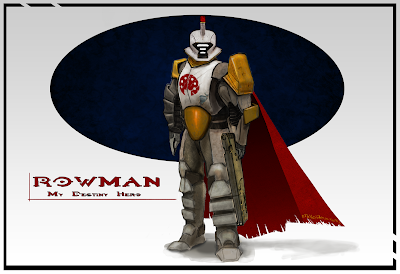--- NOTE : There are loose, opinionated deductions in the following article.
World of Warcraft, a game made by
Blizzard Entertainment, is only being used as an example of the MMO genre as a whole.
WoW is a great game, being enjoyed by millions (including myself); all respect to Blizzard and their work. This post was also written to support
this previous article on MMOs. ---
After its release in 2004, Blizzard Entertainment's
World of Warcraft has made itself both a standard and an empire in the Massive Multiplayer Online (MMO) scene. As a game, the superb design cannot be doubted; from a community
peak of +12 million in 2010 and having lasted with a strong subscriber-base for nearly a decade, this is a good game.
However,
WoW has not escaped an ailment that afflicts nearly every MMO created, where they only partially answer, "how can we expand the universe of this game world?" Currently,
World of Warcraft has dropped to
less than 7.7 million users in five short years. The following article explains in part, through deduction, why that has happened.
The first expansion for the world of Azeroth (the in-game world of
WoW) was 2007's
The Burning Crusade, that introduced new races that helped bridge a class gap (the in-game Alliance faction previously couldn't use shamans, while the Horde faction couldn't use paladins), opened-up an area completely separate from the in-game world (the original locales were untouched while new content was presented in the form of an alien landscape), and allowed for further progression along the leveling tree if a player put in some hard work.
The Burning Crusade can largely be seen as a major game-wide balancing release. To follow-up on the successful launch (and largely due to the gaming community quickly exhausting the novelty)
Wrath of the Lich King opened new areas in 2008 (namely, the continent of Northrend) and added another class. A very important thing to note, in contrast to
TBC, the area added was a continent on the original planet itself while the class did not serve as a balancing factor, but more of a gimmick (any character of the class started at a fairly high level and wielded powers that allowed it to replace many other classes).
WotLK's lore failed to answer a key question when Northrend was revealed: Why was no-one able to go to the continent before? Subconsciously, this break in consistency, the lack of a reason as to why the world in
WoW is not totally available to players, is disconcerting. Relating it to a robotic term, the '
uncanny valley' may be appropriate to describe that
WotLK was cool and seemed correct, but
something was wrong. Regardless, no issue stopped the influx of players, as
WoW then
boasted +11 million players.
However, with hype and a solid player base not yet aware of their own doubts, Blizzard Entertainment reached a
peak +12 million subscribers in October 2010. Then the
Cataclysm expansion released. Immediately, by the end of 2011,
WoW now only had
10.2 million paying players, a drop of nearly 2 million players in 1 year. Before the most recent expansion,
Mists of Pandaria in 2012,
a dip to 9.1 million was reached in the 2 years between releases.
What
Cataclysm did can be faulted in 2 ways. First, it added new races that were present in the game world previously, but never were playable. These races corrected no balance previously evident in the game, thus they served as both gimmicks and again approached an 'uncanny valley', further unsettling players.
Next,
Cataclysm's worst reason to add new areas
was to change the familiar. Locations that had been reliable for years were warped and altered into completely unrelated forms. This is the most glaring offense because: Veteran players had no 'safe' point of reference; New players couldn't be helped by veterans in navigating the world, thus severing previously common lines of communication; And, older gamers couldn't relate to the world they had enjoyed for nearly a decade, or with the naive subscribers just coming into the game. Here, perversion of the reliable makes strangers of the older players while trying to cater new content for fresh gamers, but still causes harm in the
WoW community due to players of different experience levels not interacting.
Finally, the most recent expansion,
Mists of Pandaria in 2012, added another race and class with no balance problem evident from
Cataclysm, further extending the content-for-content's sake mentality of
WotLK. Another continent was revealed, but the reason for its existence can simply be said to be 'magic'. Though slightly better than the reveal of Northrend in
Wrath of the Lich King, the
handwavium nature of
MoP's continent cannot be ignored. As a number of passionate players note, it would seem that the context for the 2012 expansion was the weakest yet in
WoW.
Currently at 7.7 million, Blizzard Entertainment's
World of Warcraft player-base has suffered. After adding content that had shallow context while changing those things that provided the safety of familiarity,
WoW has assisted itself through a number of expansions to both alienate loyal players of many years while also stranding new gamers in the content-rich game world.
The reasons for
WoW's decline are numerous, but it cannot be denied that 'new' does not equal 'better'. When additions are included for reasons other than to fix balance concerns, it is seen that they act as 'just another choice', muddying the core aspects the original game designers sought to emphasis. Evidence exists that expanding a universe to change some of the most foundational relationships of that universe results in egregious offence to young and old users alike. Without doubt, even one of the strongest design and development teams today (Blizzard Entertainment) is struck by wanting to expand its content.
With this article, I attempt to address how future MMOs can handle the issue of expanding their content.


